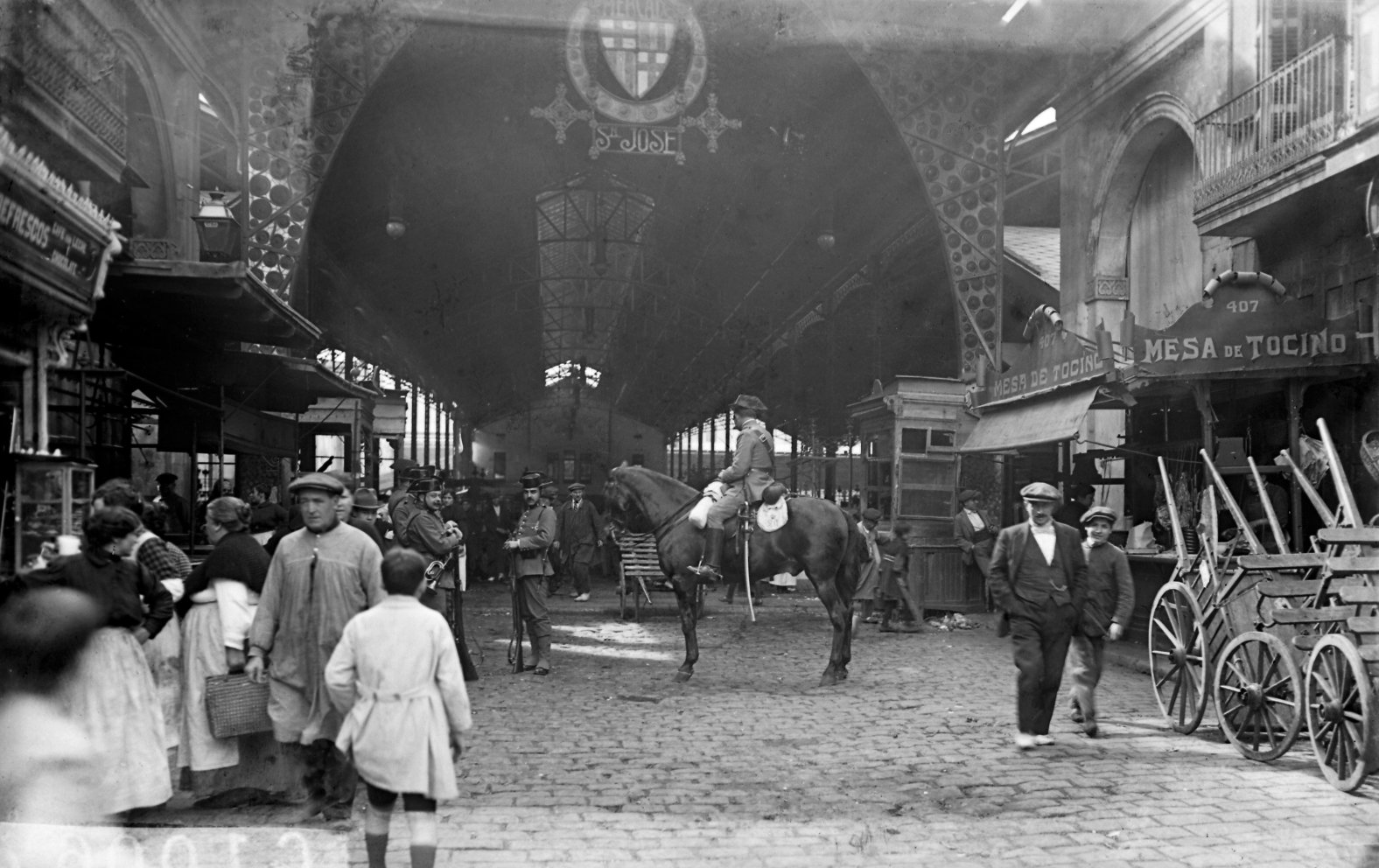Catalans called the company la Canadenca - "the Canadian firm". It was one of the first multinationals to operate in the Spanish state, an energy company which came to dominate the burgeoning business of supplying electricity to Barcelona in the early twentieth century. And as 2019 comes to a close, an exhibition currently on show in Barcelona focuses on the dramatic labour dispute of 100 years earlier that was centred on the company: the 1919 Canadenca strike, key moment in the struggle for workers' rights in Catalonia, which led to the adoption of the eight-hour working day throughout Spain - before any other country in western Europe.
The Museum of the History of Catalonia's exhibition, now extended until September 13th, 2020, puts the spotlight on this conflict, which at its height led to the imprisonment of 4,000 workers, left Barcelona in darkness and brought the energy-deprived city to a complete standstill, but which ended after several months of strike with an historic trade union victory. And it looks at the origins of the dispute, both in terms of a broader social and political picture of the age, and some of the lesser known details: in fact, the strike began not in Barcelona itself, but on a hydro power station construction site deep in Catalonia's interior.
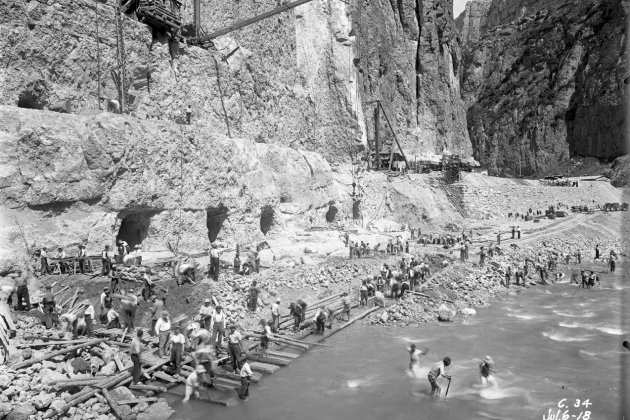
Construction of the foundations of the Camarasa power station (July 1918), Endesa Foundation Historical Collection.
From the mountains to the city
The exhibition explains the atrocious conditions of workers at the time - which had worsened due to rising prices during the period of the First World War - and the emergence of a powerful labour movement, embodied in the anarcho-syndicalist union National Confederation of Labour (CNT). A horizontal union organization that not only brought Catalan workers together, but also managed to win the support of newly arrived labourers from the rest of the Spanish state who became integrated into the collective demands.
And in the opposite corner, the business interests: la Canadenca, real name Barcelona Traction, Light and Power, incorporated in Toronto in 1911, and its many subsidiaries, both acquired (including Barcelona's tram company, the rail services to Sabadell we now call the FGC, one of the city's two electricity utilities and a 50% share in the other) and created (in particular, Ebro Irrigation and Power, the company set up to develop its ambitious hydro-electric plans).
One of the lesser known chapters in the story, which the exhibition portrays well, is that of the beginning of the conflict, in the construction works for the Camarasa Dam, 150km north-east of Barcelona, on the Noguera Pallaresa river - a rural origin for what in the end became a profoundly-urban social conflict. At Camarasa, workers had been pressuring for an improvement to their miserable conditions and pay, but the last straw, which precipitated their strike in late 1918, took place when their employer brought in the Civil Guard to search workers as they reported for work.
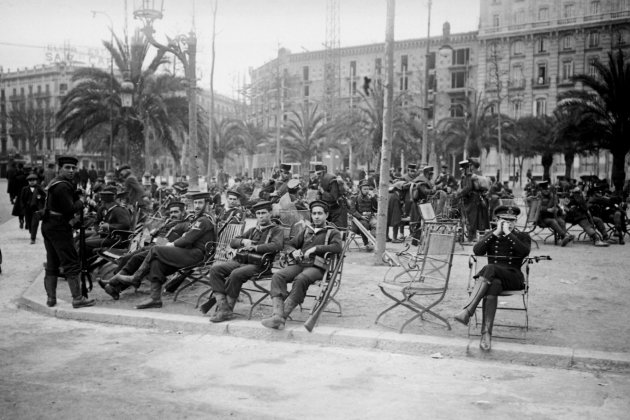
Military forces patrolled the city during the general strike (23/3/1919), Josep Brangulí Soler, National Archive of Catalonia.
Barcelona at a standstill
The central part of the conflict shifted the scenario to Barcelona, where the contagion from the industrial action in Camarasa first spread to office workers of the company in Barcelona. But they found broad support among workers in the many other energy and transport Canadenca subsidiaries - so that the strike left Barcelona completely in the dark and with virtually no form of transport.
The exhibition details the repressive measures against strikers: the military occupation of public spaces, the army takeover of services, the imprisonment of unionists, the use of ships as prisons. Also highlighted is the key role women played in both protests and actions to ensure the survival of strikers and their families. A video from a Catalan TV drama highlights the role of a key union leader, the so-called Noi de la Sucre ("Sugar Boy"), real name Salvador Seguí, capable not only of impelling the strike but also forcefully negotiating terms of settlement with bosses and getting the rank and file behind him at a famous rally in Barcelona bullring Las Arenas.
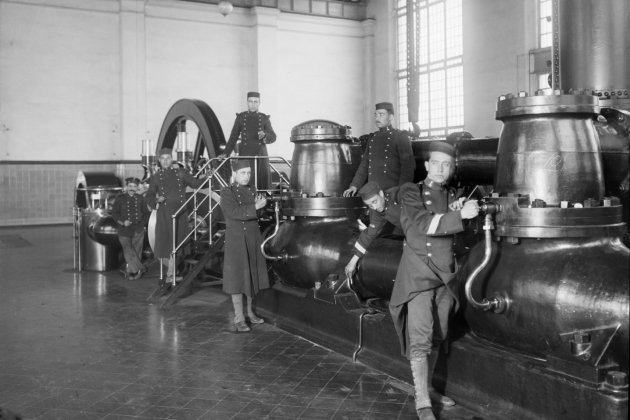
Soldiers and military engineers operating the machines at the Barcelona Water Company's station at Cornellà de Llobregat (1919), Josep M. Sagarra Plana, National Archive of Catalonia..
That wasn't the end
It was not yet all over: power and transport workers returned to their posts after 44 days' strike, but the authorities then failed to keep their part of the bargain, which was to release the many prisoners. A general strike then ensued, and further intense conflict, which finally forced the Madrid government to intervene and give way to workers' demands, with the establishment, throughout the Spanish state, of an eight-hour working day.
"Understanding a strike like that of the Canadenca helps us understand ourselves as a people," said Catalan culture minister Mariàngela Vilallonga at the opening of the exhibition last month. On the other hand, Catalan labour minister Chakir el Homrani put the emphasis on the extremely high levels of both repression and solidarity that the strike revealed. But he added that it was an example of both struggle and conflict management: labour union CNT had an extraordinary ability to mobilize, but also, said el Homrani, there were lessons in how the dispute was negotiated and resolved, a mixture of radicalism and pragmatism. Exhibition curator Dolors Domingo, however, commented that there are many social rights which are still to be won. And although she didn't say it specifically, there are many in Catalonia, and elsewhere of course, who continue to work for more than an eight hour day, a century after the Canadenca workers' victory.
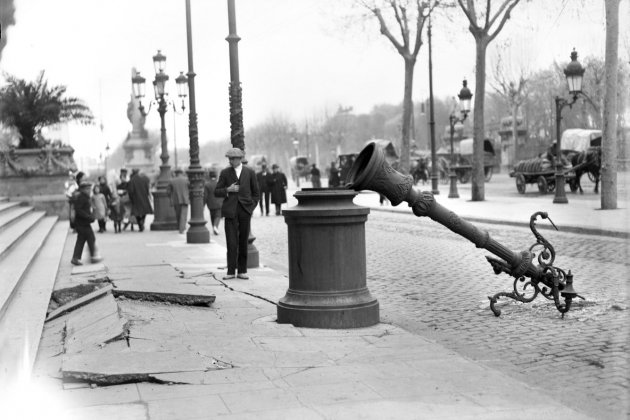
Damage after street unrest during the strike (1919), Josep M. Sagarra Plana, National Archive of Catalonia.
The exhibition is presented in Catalan, although explanatory guides are available in English and Spanish, and while it's an exhibition which requires reading to get the most from, it also includes some excellent visual material: a magnificent video focusing on Camarasa and spectacular images of the strike in Barcelona. The use of cartoons from humour magazines of the day offers a more acidic vision. The exhibition provides invaluable insights into the anarchist movement and the context of this major strike, and has a very complete chronology of events. That said, it could be more varied in its presentation - and the absence of more texts in other languages is a pity for visitors to the city. Overall though, an important exhibition on a event that marked a turning point in the history of Catalonia and inspired subsequent social movements. Last but not least, entry is free.
Place: Museum of the History of Catalonia, Plaça de Pau Vila, 3 (Metro: Barceloneta)
Exhibition: La Vaga de la Canadenca, open until September 13th, 2020. Free entry.
Cover photo: Civil Guard officer on horseback patrolling the market of Sant Josep (La Boqueria). 03/02/1919, Josep Brangulí Soler, National Archive of Catalonia.

